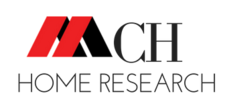Content optimization refers to the process of making your content more valuable for both search engines and readers, including researching and creating relevant material that addresses questions posed by your target audience.
Use relevant keywords to make your content relevant to users’ searches and increase its chance of appearing as featured snippets.
Keyword Research

Keyword research is an integral component of SEO strategies, providing essential insight into which queries your audience is searching on Google and providing direction on how best to optimize content for maximum impact. However, research shouldn’t only focus on keywords; you also must take into account your audience’s intent, competition and which topics are most pertinent for your business.
At first, keyword research can be an overwhelming process. To make things simpler and narrow down your list, tools like Google Adwords provide insight into which terms perform well in search results while SERP features such as People Also Ask/Related Searches can offer extra suggestions based on what search queries your target audience are conducting.
Once your list has been reduced, the next step should be identifying your keyword strategy. Begin by creating topic buckets and identifying potential head keywords important to your audience, before considering monthly search volumes and competitiveness – saving only those that perform best and developing content around them.
Your keyword strategy’s goal should be to discover which terms are of most significance to your audience, then produce content that addresses those keywords or solves those problems. Doing this will lead to higher search engine result page rankings, increasing organic traffic to your website.
However, without optimizing your content to achieve maximum impact, traffic won’t necessarily translate to conversions. For instance, if you write a blog post about starting a new blog but fail to include technical aspects of blogging as they pertain to blog creation, visitors will most likely click away and visit another that provides more valuable content – which highlights why keyword strategy development takes time and care must be given when writing relevant material for audiences.
Headings
Headings are often the first impression people get of your page or content. Not only can they help readers to quickly gather pertinent data, but search engines use headings as part of their algorithmic assessment of a page’s relevance; for this reason it is crucial that your headings reflect keywords you wish to rank for.
The main header (also known as H1) of your article should contain keywords related to its topic or message, while still remaining within 300 words to avoid being penalized by Google for keyword stuffing. Avoid multiple H1 tags as this can confuse search engines and make navigation difficult for readers of your site.
Select titles that accurately describe the content that follows them, using keywords and including a question or call-to-action in their titles to increase engagement with your content and ensure readers can easily comprehend what they’re reading. Doing this will not only encourage visitors to click but will also ensure they engage with it and understand its message.
Headings come in various formats, and it’s essential that when choosing one for your work you consider both your audience and any possible puns or slang used within it that could potentially confuse non-native English speakers or cause issues for screen readers and assistive technologies.
Your webpage sections and headings serve as landmarks on your website, so it’s crucial to structure them correctly. A section title should be the primary heading with an H1> ranking; second-level headers (such as H2) provide more in-depth content details about that section; while finally H3> provides subheadings or further subheadings.
Optimizing content to its full potential may take time and effort, but the payoff is well worth your while. Not only will optimizing for maximum impact help your rankings on Google rise higher; moreover, it will attract more visitors while building trust among your audience members.
Meta Descriptions
Meta descriptions are short text fields that appear below your page title in search engine results pages (SERPs), providing a brief summary of its content. Although they don’t directly impact SEO, meta descriptions play an integral part in increasing click-through rates (CTR) and helping searchers determine whether your content matches their search query.
A good meta description should highlight the value of your content and entice searchers to visit it, while being written in an engaging tone appropriate to your business – for instance if your brand has an entertaining sense of humor you could add that into the description to make it more compelling; just don’t be overly promotional as consumers don’t appreciate such tactics, and will move past any SERP result they perceive as pushy or lacking authenticity.
For optimal Google results, write your meta description using natural language and keep it under 160 characters; otherwise Google may cut it short and may truncate it altogether. Include target keywords without overusing them – as Google may flag your site as spammy and reduce rankings accordingly.
Search engines provide people with solutions to their problems when they type a query into them, so it is wise to think about what challenges your potential customers are experiencing and include that into your meta description to build trust among users that your content can offer them an answer to their dilemmas.
If you don’t have the time or resources to create compelling meta descriptions on your own, why not hire professional freelance writers instead? WriterAccess offers hundreds of talented writers ready to collaborate on content projects; just start searching today to find your perfect writer! With proper strategies and tools in hand, creating compelling meta descriptions that increase search engine optimization while increasing click-through rates is achievable – be sure to test various lengths and phrases until finding what works for your content!
Internal Linking
Your website’s internal linking structure can have a huge impact on SEO and ads together, so it’s essential that it be structured correctly. This means creating a clear topical hierarchy, using categories and subcategories to group similar content together, and keeping the number of categories low so as not to overwhelm users and search engines alike.
Your site’s SEO can also benefit from using relevant anchor text when linking internally, such as short and concise phrases that address the topic of each page it links to. Avoid exact-match keyword phrases as these could have adverse impacts on SERP rankings.
Breadcrumbs can also help Google understand the relationship between pages on your website more clearly, according to John Mueller. According to him, this strategy is “supercritical for SEO,” as it shows Google which are the most vital pages and allows it to locate them more quickly.
Avoid internal redirects as these can have a devastating impact on SEO. Instead, link directly to the most pertinent page within your site so users aren’t disoriented by sudden redirects and can continue along their intended paths.
An effective internal linking strategy will also help maintain your site navigation and URL structure efficiently, eliminating too many internal links that could negatively affect page speed or user experience. Furthermore, any broken links must be addressed immediately so as to keep users from experiencing an inconsistent experience on your site.
Effective content optimization techniques can have a dramatic impact on both SEO and your bottom line. By making content useful and relevant to users, you’ll keep visitors on your site longer – leading to more conversions! So don’t wait, start applying these best practices immediately!




